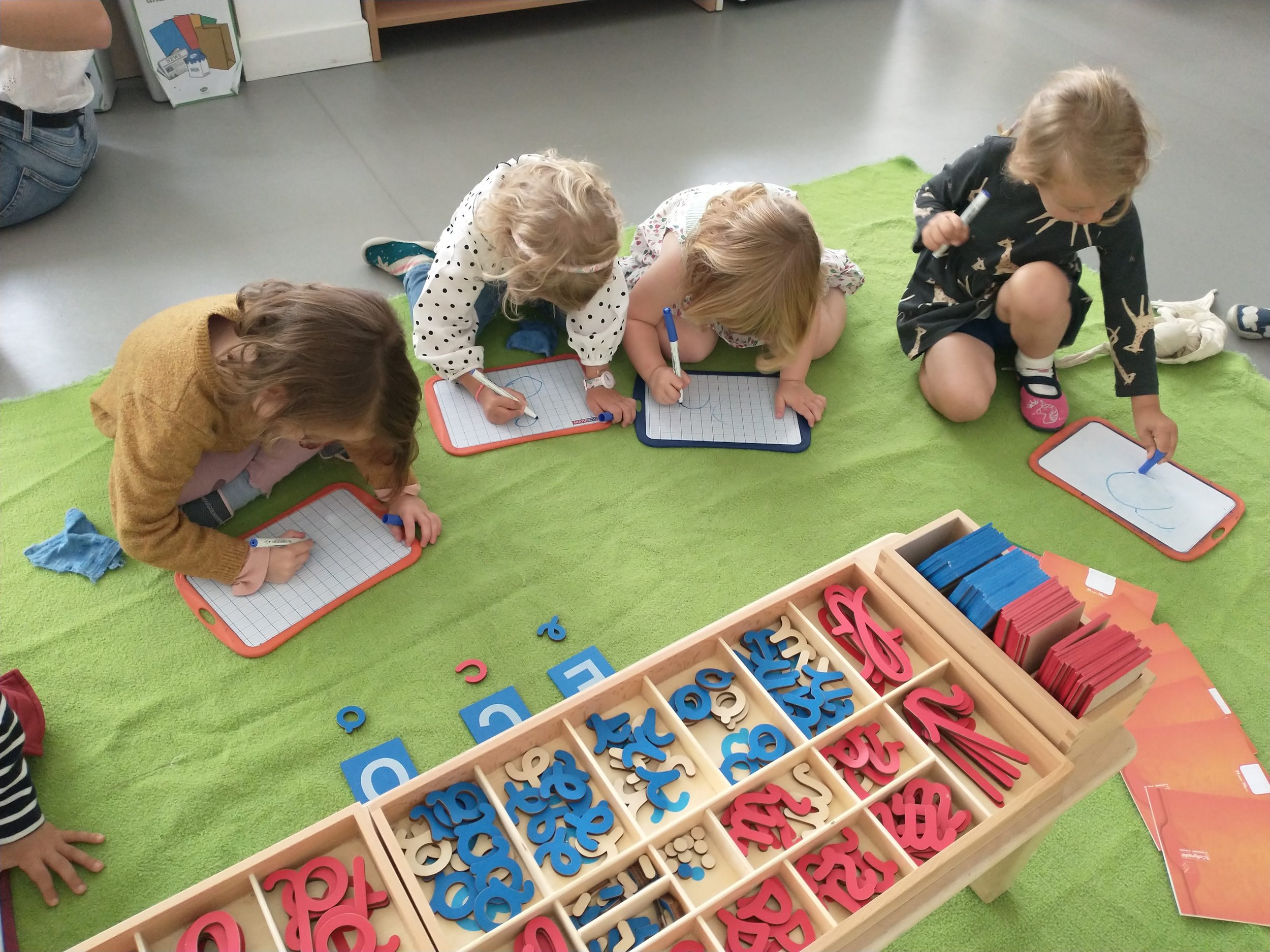
Montessori pedagogy, developed by Maria Montessori at the beginning of the XXᵉ century, is a child-centered educational approach that encourages autonomy and self-fulfillment. It is based on several fundamental principles that aim to respect the rhythm and needs of each child. The école M, which is partly based on Montessori pedagogy, is committed to passing on its methods.
The Montessori Method is based on essential principles that promote children's development from birth. It focuses on :
Discover the origins and key elements of the Montessori method.
In practice, Montessori pedagogy is applied through a variety of activities adapted to children's ages.
Two of our Montessori schools are 100% Montessori.
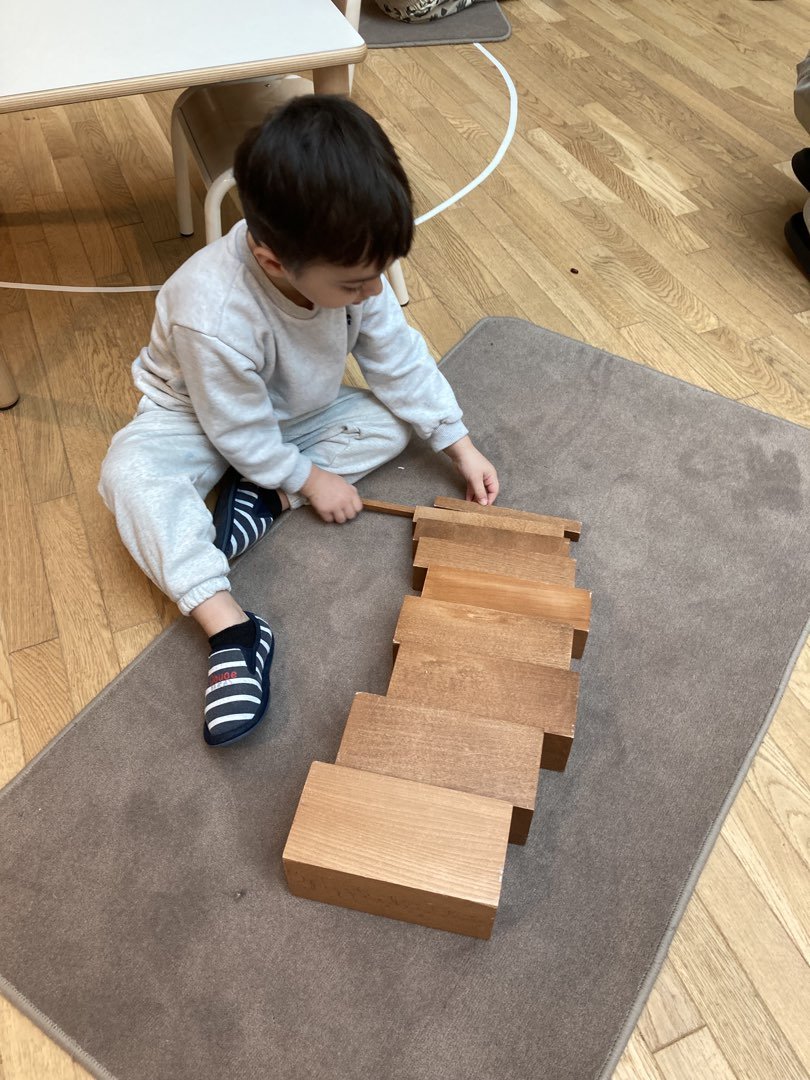
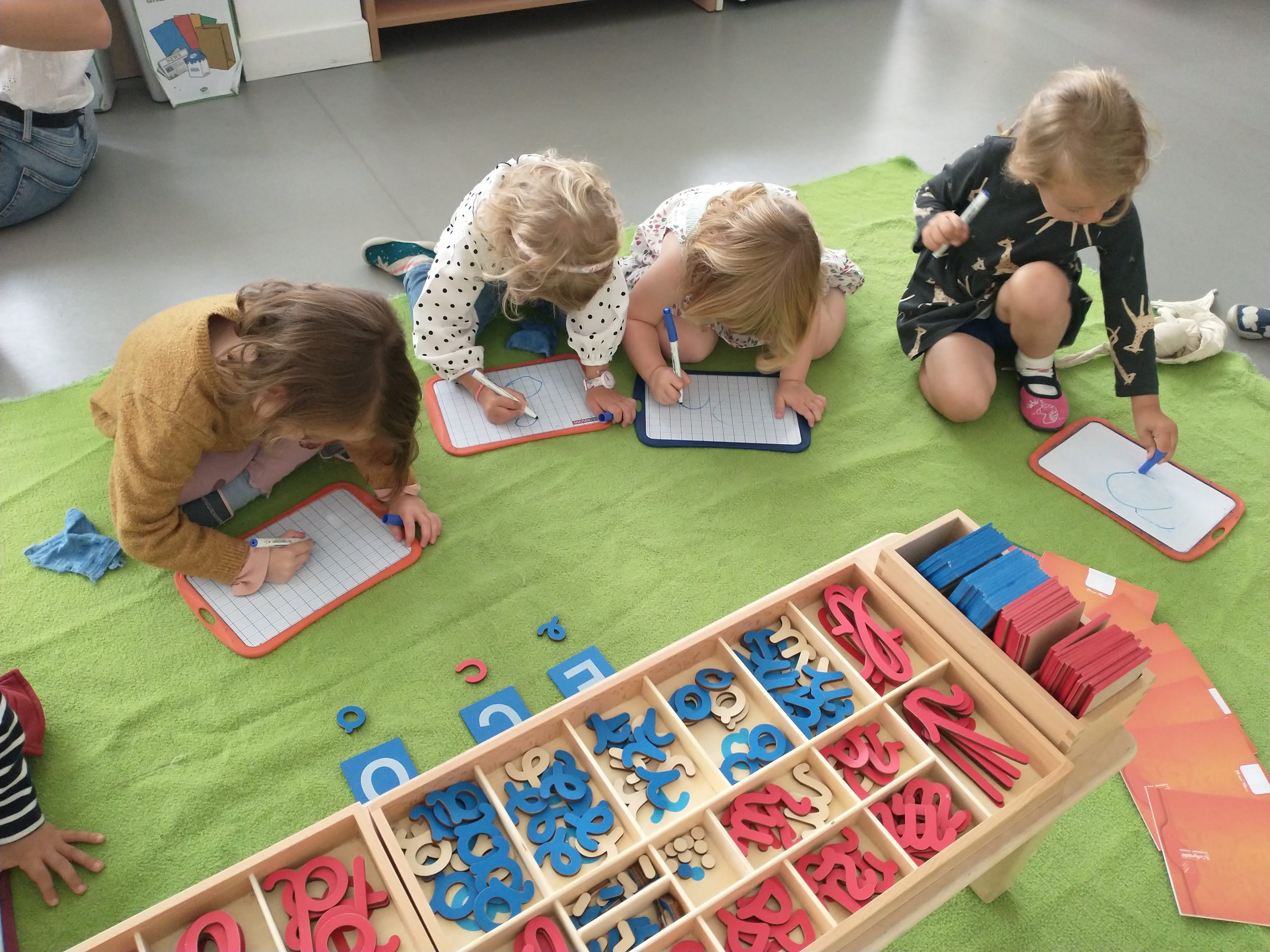
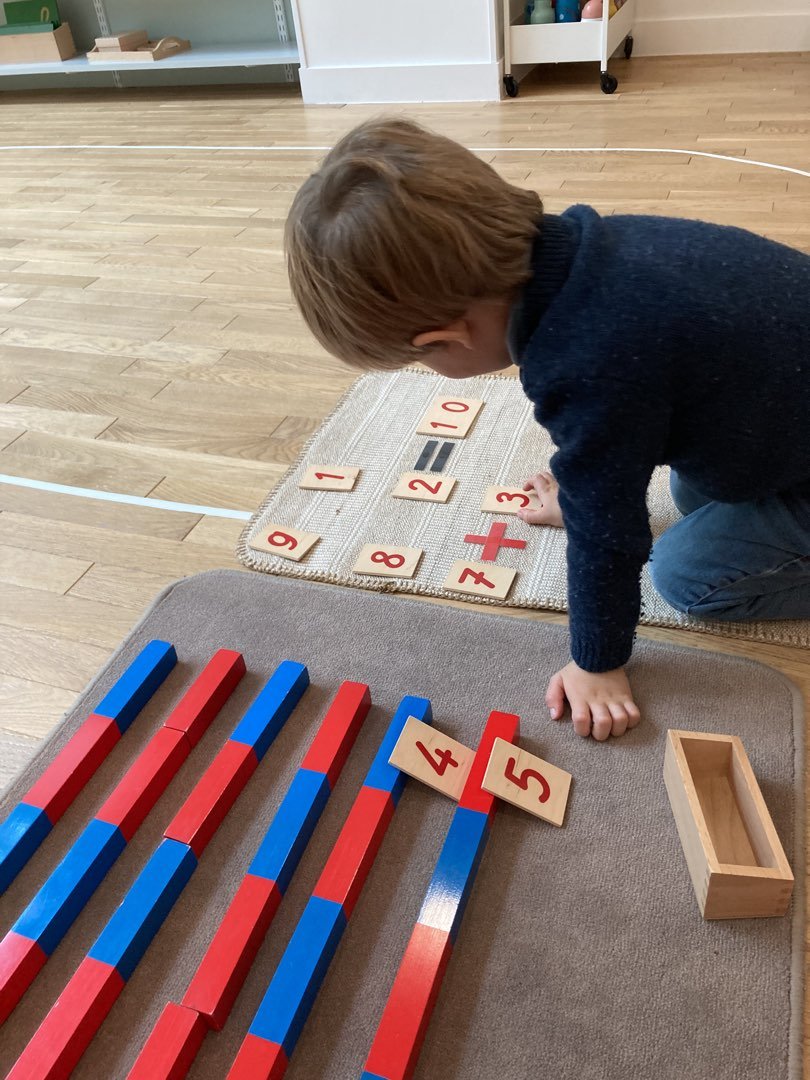
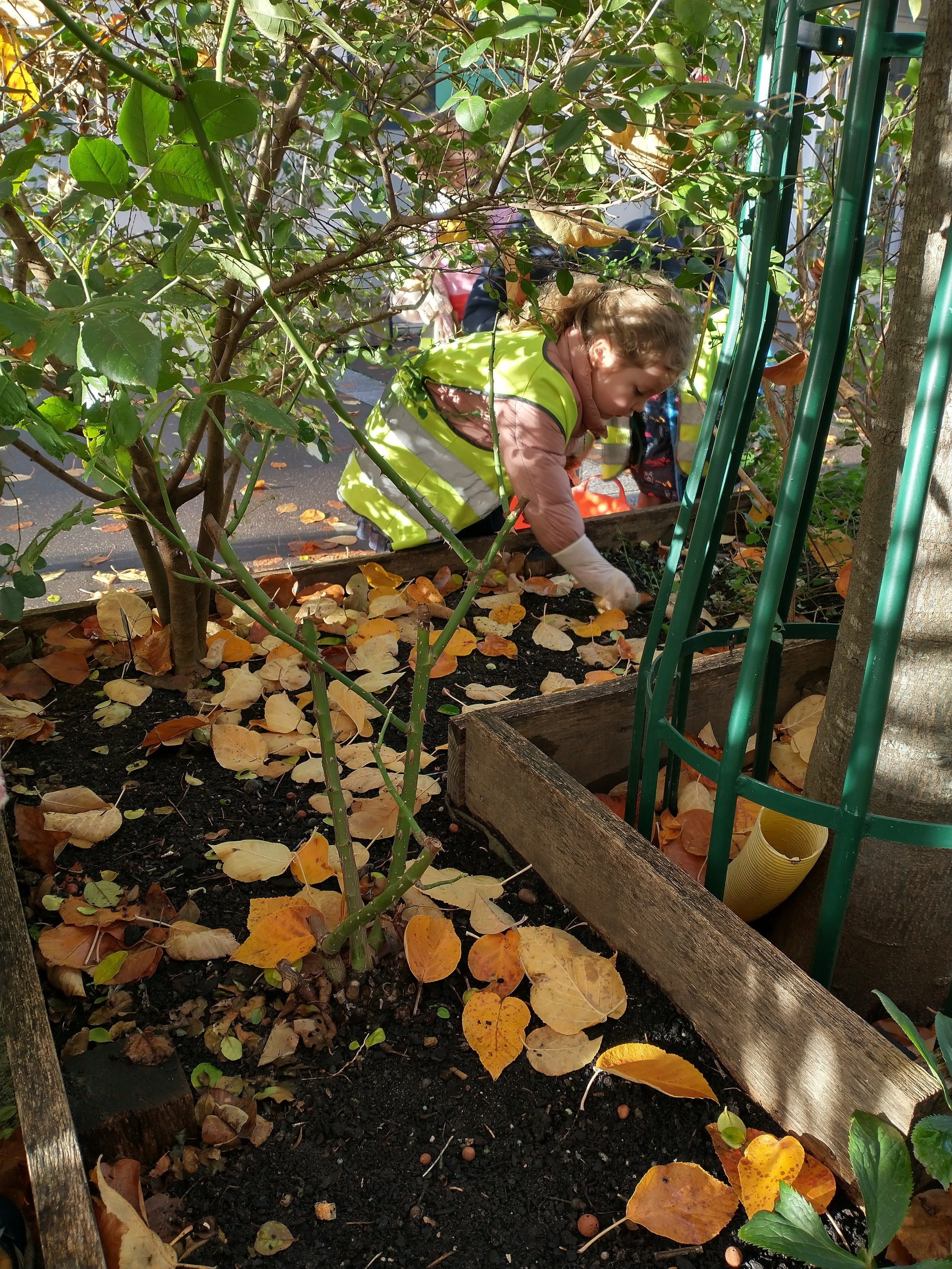
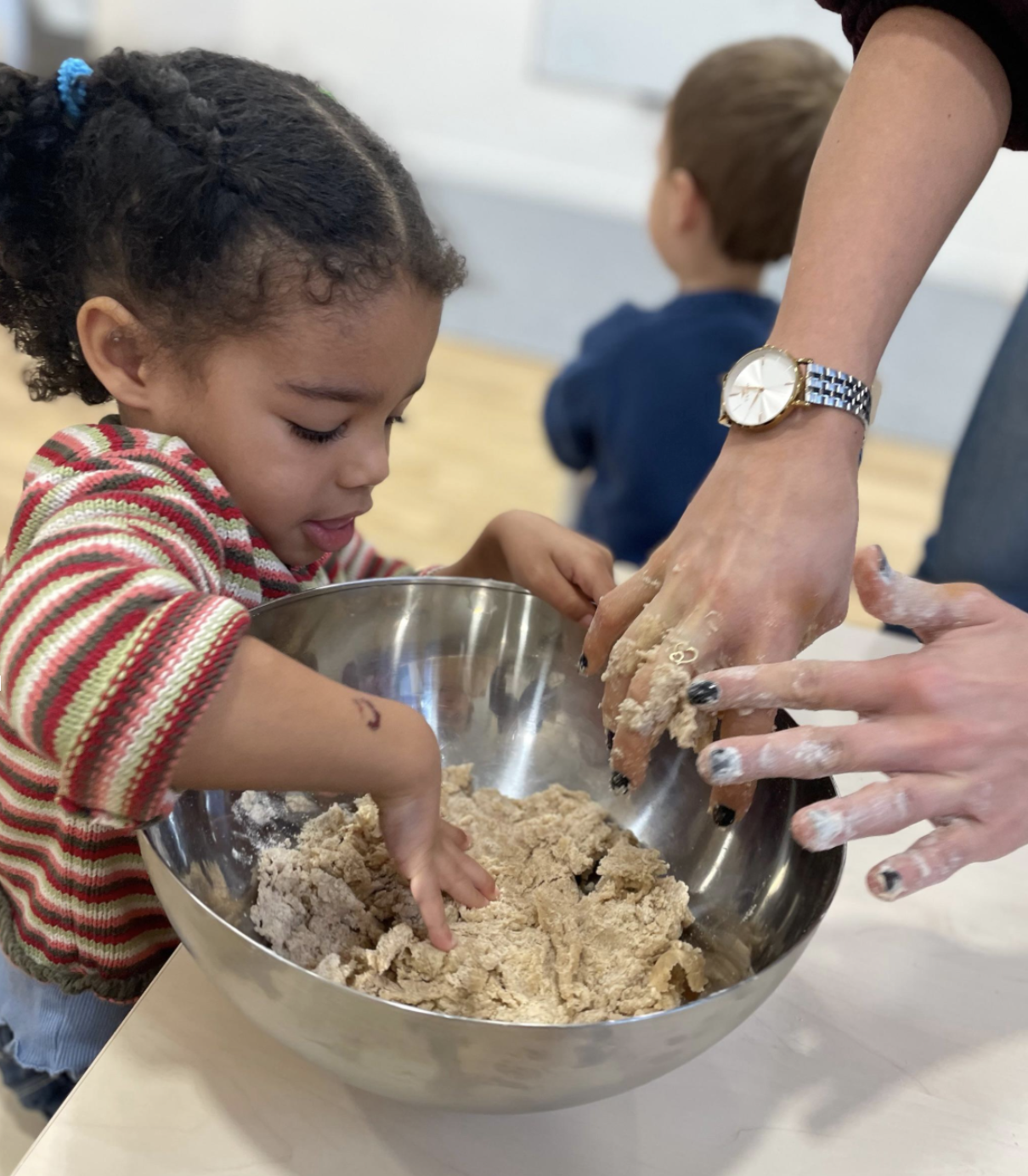
The organization of Montessori classrooms differs from that of the conventional system in France. Children are grouped into age brackets (0-3 and 3-6) and live in specific environments adapted to their development. Teachers, whom Montessori compares to "guides", observe and accompany children as they learn, without imposing vertical learning.
Children up to 3 years of age evolve in a space called the "communauté enfantine", which corresponds to the equivalent of the beginning of a first year of preschool. This environment fosters autonomy and motor skills through practical and sensory activities. Activities include :
A kitchen and dining area is set up to teach children how to use their silverware and sit at the table. An area dedicated to sleeping and changing enables them to gradually acquire continence. At école M, we welcome children to the children's community from the age of 2.
Children aged 3 to 6 then move on to the Maison des Enfants, which groups together the petite section, moyenne section and grande section levels. This age mix encourages :
In this environment, learning becomes more complex and is organized into work areas, with specific teaching materials enabling children to acquire the skills needed to enter CP :
The aim of Montessori pedagogy is to respect the natural development of each child, while providing a structured framework to help them progress at their own pace.
At École M, we apply Montessori principles to provide a caring and stimulating environment for every child. Our qualified educators accompany children in their development, respecting their rhythm and needs. By integrating Montessori methods into our teaching, we help each child to become an autonomous and fulfilled learner.
In conclusion, Montessori pedagogy offers an alternative to traditional education by placing the child at the center of his or her learning. L'École M is a major player in Montessori pedagogy, guaranteeing an optimal learning environment for young children. Find out more about our vision and programs on our website , or book a videoconference with our admissions manager to find out more.
To find out more about Montessori pedagogy, you can also consult the resources at Association Montessori Internationale, which provides detailed information on this active pedagogy.